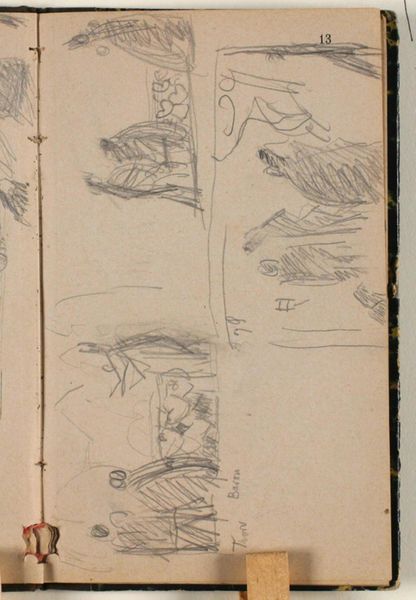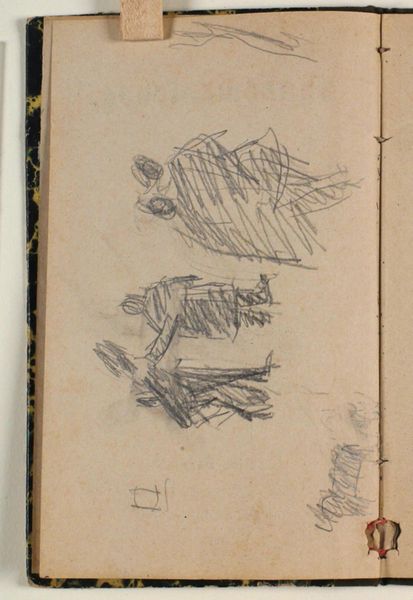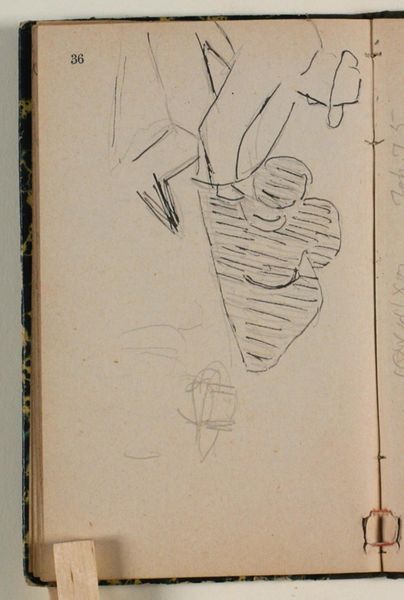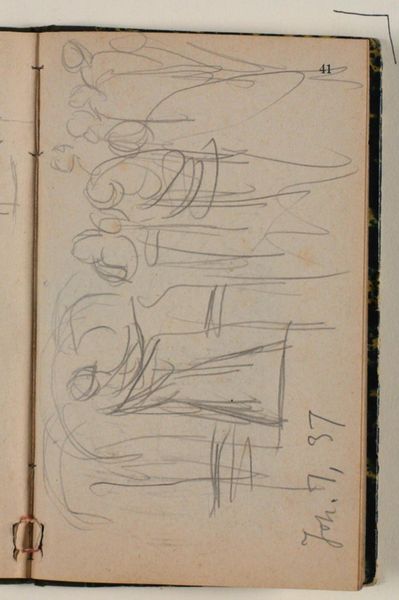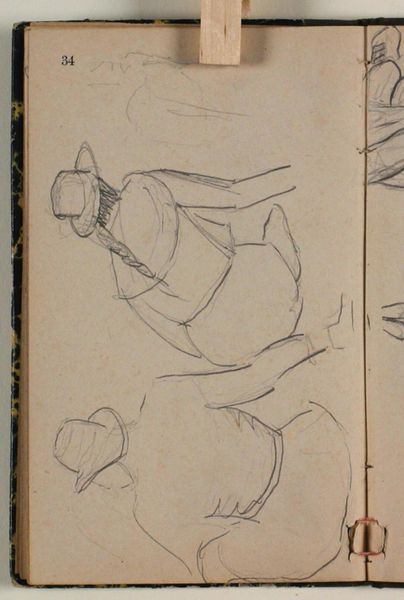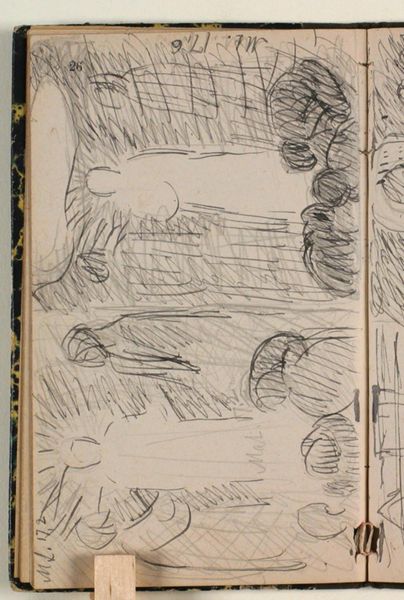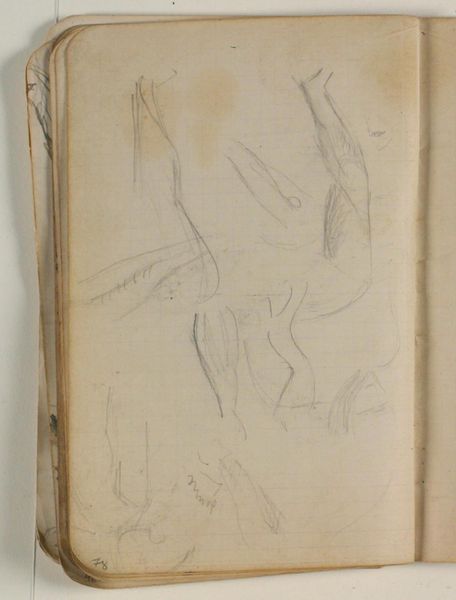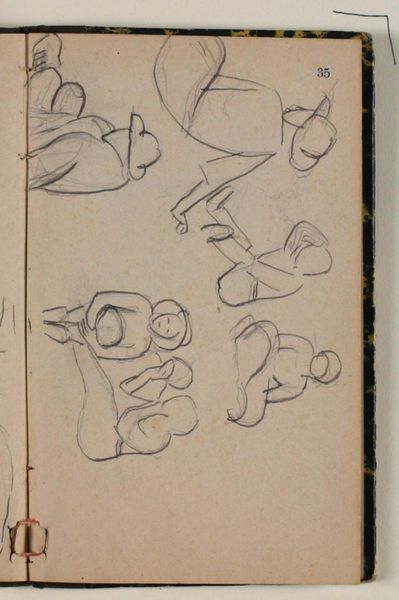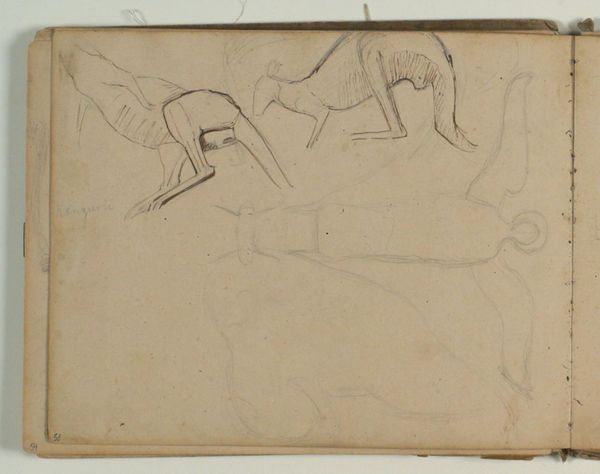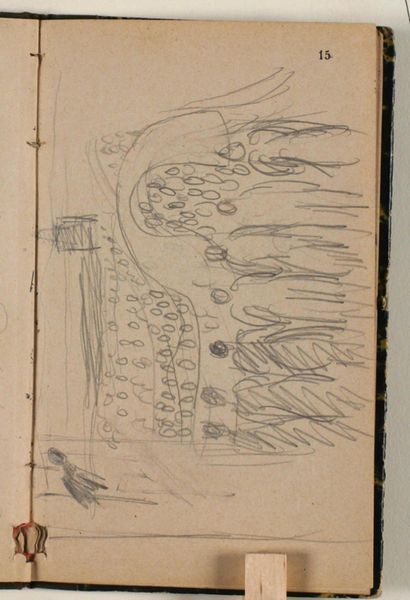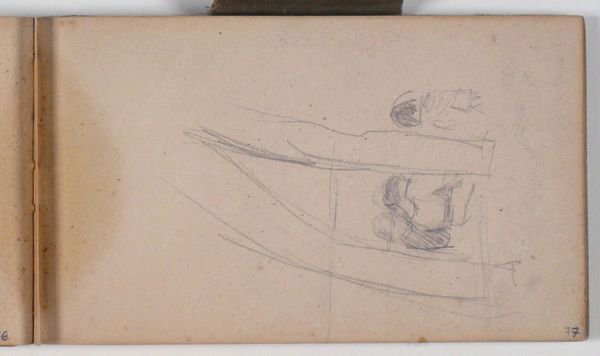
drawing, paper, pencil, graphite
#
portrait
#
drawing
#
landscape
#
figuration
#
paper
#
sketch
#
pencil
#
graphite
Dimensions: 153 mm (height) x 93 mm (width) (monteringsmaal), 153 mm (height) x 93 mm (width) (bladmaal)
Curator: Today, we're looking at "Skitse til "Engen ved Nysø," a pencil and graphite sketch on paper by Niels Larsen Stevns, dating from between 1864 and 1941. Editor: Ah, a snapshot, it feels almost stolen from a private moment. Very gestural, like catching figures in the periphery as they dissolve back into the landscape. There's a definite energy, a sort of beautiful transience here. Curator: The dynamism certainly emerges from Stevns' approach to line. The repetition and layering create depth, but also suggest a sense of movement. We can see how he’s working out the relationships between these figures. Notice the interplay between positive and negative space; the unworked areas of paper become as vital as the graphite itself. Editor: Exactly! It’s almost like he’s pulling these beings, these impressions, out of the void. Or maybe, the figures *are* the void, glimpses of absence given form. It tickles my mind in all the best ways. The sparse rendering makes the entire scene appear more as a collective experience rather than a straightforward portrait, it gives everything this dreamy feeling... Curator: Yes! It's as though Stevns invites us into his thought process, allowing us to witness the emergence of form. While the quick execution renders details secondary to a capturing of essential qualities, like a memory struggling into being. A play between reality and imagination if you will. Editor: Beautifully put! And because it's a sketch, there's no pretense, you see all these nervous twitches of the hand trying to find its form and rhythm with all these shapes...It leaves it open for us, the viewer, to participate actively in the making of the piece. To finish it in our mind's eye. Curator: Indeed, Stevns hands us an incomplete world, a structure whose meaning is unlocked through engagement rather than observation. Editor: This little window offers more than some finished pictures could. Curator: Yes, that balance, and the delicate tension between suggestion and form invites contemplation about art as process. It allows us to witness the origins of the artwork itself.
Comments
No comments
Be the first to comment and join the conversation on the ultimate creative platform.
